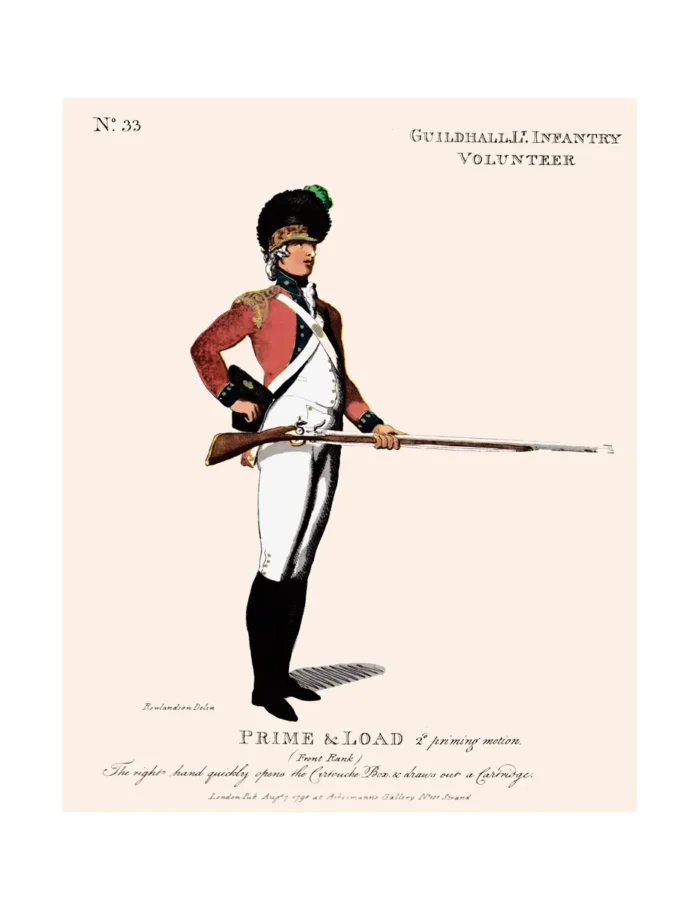No. 33 Guildhall Lt. Infantry Volunteer
£12.50
Guildhall (scroll down for a more detailed Description)
The first reprints of the 1798 aquatints by Thomas Rowlandson (published by Rudolph Ackermann) published in 1972 by Hugh Evelyn Limited.
Image size is 20.5 x 25.5 cm [8” x 10”] against a light greyish orange background (c. RGB fcf2e1) impressed on medium high white matt cartridge paper of c. 120 g/m2.
Print size: c. 26.2 x 33.7 cm [17” x 12 ¾”] may vary slightly from printers’ cut 50 years ago
Details of London Wards and Parishes provided by © the British Library
We offer thanks to the Trustees of the British Library and British Museum and Wikipedia for some text (and map outlines
Print is STANDARD size – shipping is the same for 1 to 10 prints (based on largest print size in your order) – see Shipping & Returns
Who were the Loyal Volunteers ? See here
In stock
Description
Guildhall (see map) is a municipal building in the Moorgate area of the City of London, England. It is off Gresham and Basinghall streets, in the wards of Bassishaw and Cheap. The building has been used as a town hall for several hundred years, and is still the ceremonial and administrative centre of the City of London and its Corporation. It should not be confused with London’s City Hall, the administrative centre for Greater London. The term “Guildhall” refers both to the whole building and to its main room, which is a medieval great hall. The nearest London Underground stations are Bank, St Paul’s and Moorgate. It is a Grade I-listed building. The current building began construction in 1411 and completed in 1440. The Great Hall did not completely escape damage in the Great Fire of London in 1666; it was partially restored (with a flat roof) in 1670.
The present grand entrance (the east wing of the south front), in “Hindoostani Gothic“, was added in 1788 by George Dance. A more extensive restoration than that in 1670 was completed in 1866 by the City of London architect Sir Horace Jones, who added a new timber roof in close keeping with the original hammerbeam ceiling. This replacement was destroyed during the Second Great Fire of London on the night of 29/30 December 1940, the result of a Luftwaffe fire-raid. It was replaced in 1954 during works designed by Sir Giles Gilbert Scott, though the original hammerbeam design was not retained. Trials at the Guildhall have included those of Anne Askew (the Protestant martyr), Thomas Cranmer (Archbishop of Canterbury) and Lady Jane Grey (“the Nine Days’ Queen”) as well as Henry Garnet (executed for his complicity in the Gunpowder Plot of 1605). The 1783 hearing of the infamous Zong case, the outcome of which focused public outrage about the transatlantic slave trade, also took place at Guildhall. On 16 November 1848, the pianist Frédéric Chopin made his last public appearance on a concert platform there. The marathon route of the 2012 Summer Olympics passed through Guildhall Yard.
Additional information
| Weight | 0.0121 kg |
|---|---|
| Dimensions | 25 × 35 cm |






